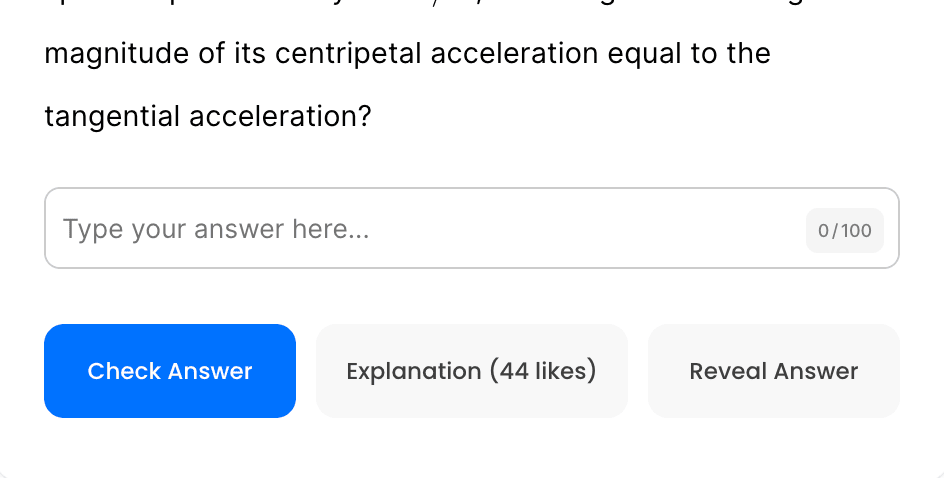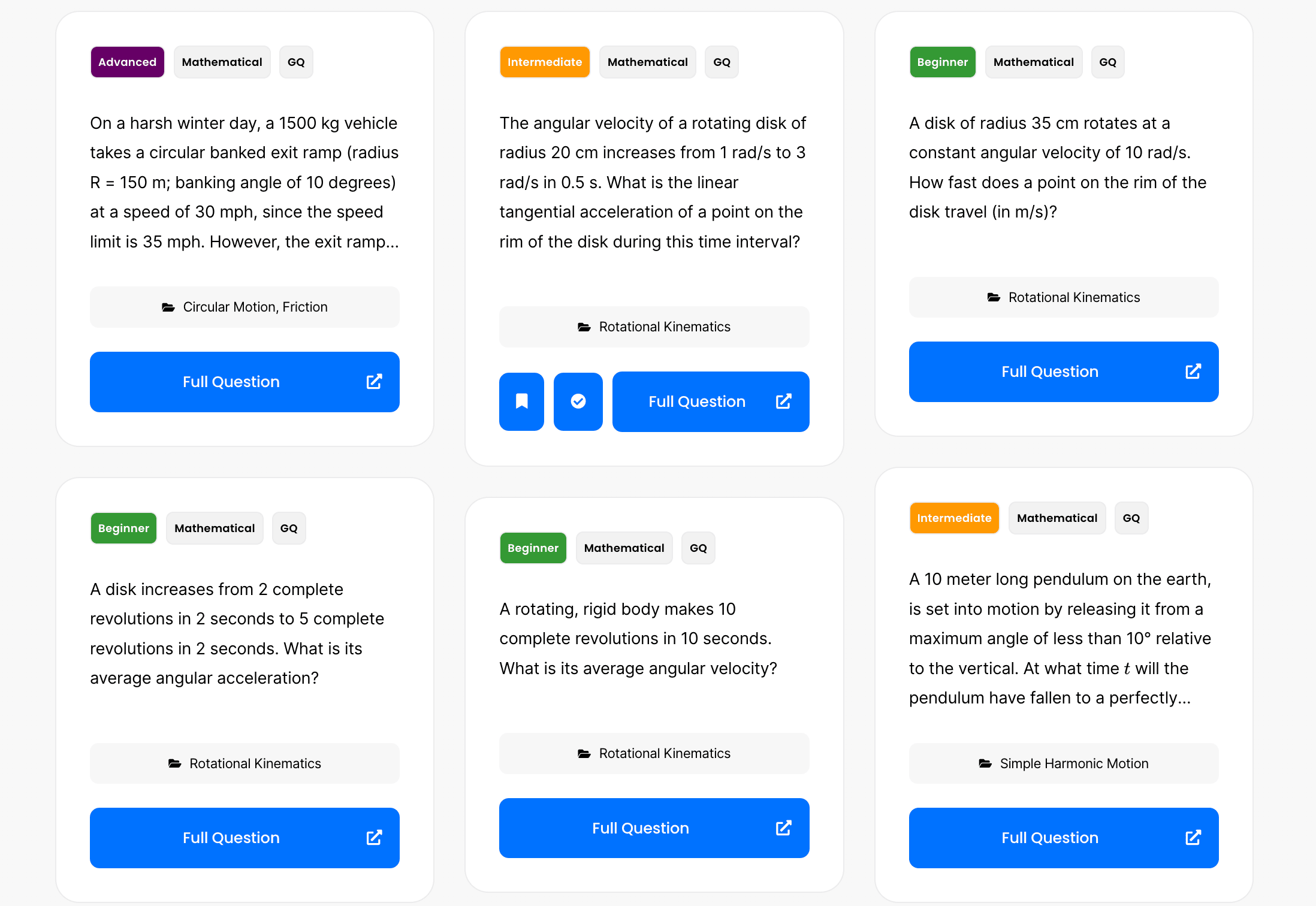A block of mass \(m\) is accelerated across a rough surface by a force of magnitude \(F\) exerted at an angle \(\theta\) above the horizontal. The frictional force between the block and surface is \(f\). Find the acceleration of the block (as an equation).
Jill does twice as much work as Jack does and in half the time. Jill’s power output is
Why is more fuel required for a spacecraft to travel from the Earth to the Moon than to return from the Moon to the Earth?
A child on Earth has a weight of \(500 \, \text{N}\). Determine the weight of the child if the Earth were to triple in both mass and radius (\(3M\) and \(3r\)).
You are working out on a rowing machine. Each time you pull the rowing bar toward you, it moves a distance of \(1.25 \, \text{m}\) in a time of \(0.84 \, \text{s}\). The readout on the display indicates that the average power you are producing is \(76 \, \text{W}\). What is the magnitude of the force that you exert on the handle?
A rubber ball and a piece of clay have equal masses. They are dropped from the same height on horizontal steel platform. The ball bounces back with nearly the same speed with which it hit. The clay sticks to the platform. Choose all that is true about the ball/platform and the clay/platform systems.
Vector \( A \) is \( 44.0 \) units and \( 28.0^\circ \) above the \( +x \) axis, vector \( B \) is \( 26.5 \) units and \( 56.0^\circ \) above the \( -x \) axis, and vector \( C \) is \( 31.0 \) units along the \( -y \) axis. Determine the resultant (sum) of the three vectors.
Measurements made in 1910 indicate that the common flea is an impressive jumper, given its size. Assume that a flea’s initial speed is 2.1 m/s, and that it leaps at an angle of 21° with respect to the horizontal. The jump lasts 0.16 s.
A mass moving with a constant speed \( u \) encounters a rough surface and comes to a stop. The mass takes a time \( t \) to stop after encountering the rough surface. The coefficient of dynamic friction between the rough surface and the mass is \( 0.40 \). Which of the following expressions gives the initial speed \( u \)?
Consider a neutron star with a mass equal to the sun, a radius of 10 km, and a rotation period of 1.0 s. What is the speed of a point on the equator of the star?
A blue ball is thrown upward with a velocity of \( 9 \) \( \text{m/s} \) upward from the top of a high cliff. At the same time, a red ball is dropped from the same spot. The red ball is observed to hit the ground below exactly \( 1 \) \( \text{s} \) before the blue ball. How high is the cliff?
The tub of a washer goes into its spin-dry cycle, starting from rest and reaching an angular speed of \( 5.0 \) \( \text{rev/s} \) in \( 8.0 \) \( \text{s} \). At this point, the person doing the laundry opens the lid, and a safety switch turns off the washer. The tub slows to rest in \( 12.0 \) \( \text{s} \). Through how many revolutions does the tub turn during the entire \( 20 \)-s interval? Assume constant angular acceleration while it is starting and stopping.
By continuing you (1) agree to our Terms of Use and Terms of Sale and (2) consent to sharing your IP and browser information used by this site’s security protocols as outlined in our Privacy Policy.
Quick Start Guide
AP physics 1, AP C, honors and advanced physics students.
Quickly filter questions by units and more.


Here’s guide to using 5 UBQ filters.
GQ = general question, MCQ = multiple choice, FRQ = free response.


Click the check or bookmark button.
Now you’ll be able to see completed or bookmarked questions at a glance!
Answer keys, personalized for you.

Phy will be responsible for grading your FRQs and GQs.
No more copy and pasting. Just solve and snap.
Questions for Mastery

By continuing you agree to nerd-notes.com Terms of Service, Privacy Policy, and our usage of user data.